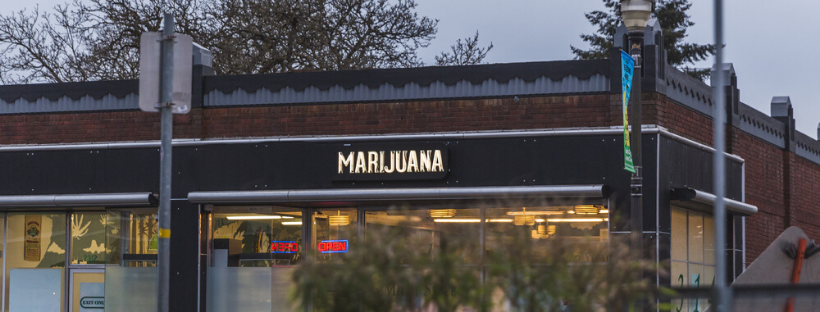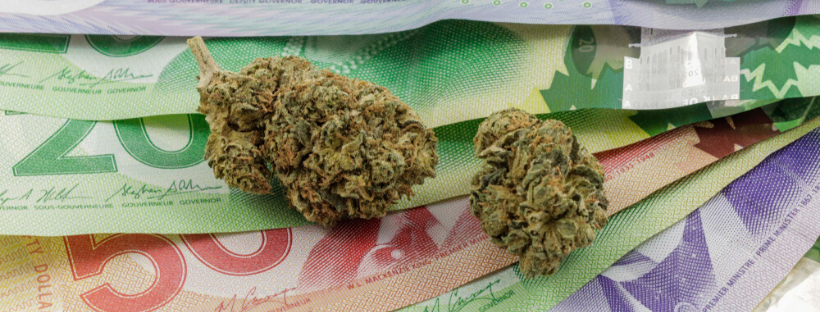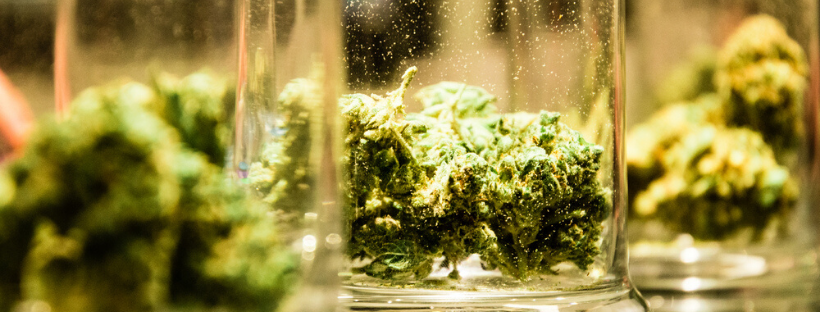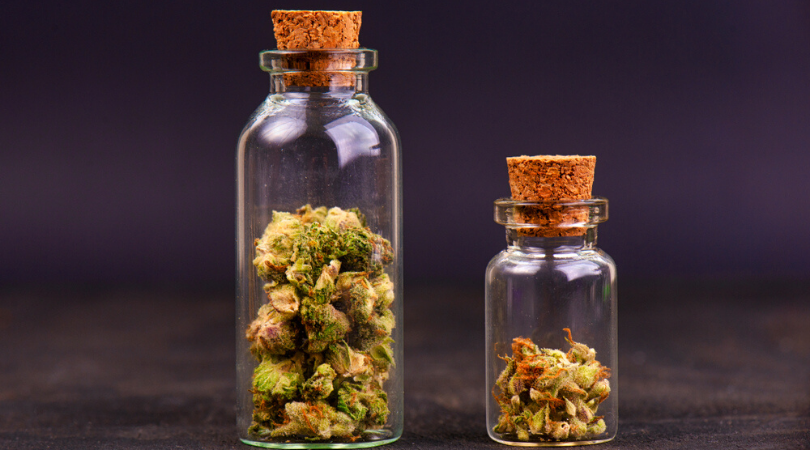Cannabis
9 Things to Know Before You Even Set Foot in a Cannabis Dispensary
It’s quite possible that your state has recently legalized cannabis for recreational or medical purposes, or you’ve just moved to Canada and want to see how it is when you can legally buy your weed in a similar way you do in Amsterdam or Barcelona. But unlike the cannabis shops in those European countries, American dispensaries are completely regulated.
This means that cannabis is actually legal here, not just tolerated. You can browse through a plethora of weed-infused products, different strains, and formats you’ve never dreamed of.
But before you run rampant through your neighborhood in search of the best cannabis dispensary near you, it’s good to know what you’re actually going there for.
There’s a lot of confusion around cannabis dispensaries. Some people confuse them with head shops; others accidentally drop by a medical dispensary without a card wondering why the staff doesn’t want to sell them anything.
And even if you somehow manage to get to the right place, you can get overwhelmed by the abundance of products available on shelves.
This article will help you with everything you need to know before you even set foot in a cannabis dispensary.
Jump, jump — the ship isn’t full yet!
Cannabis Dispensaries vs. Head Shops
There’s a striking difference between cannabis dispensaries and head shops many people seem to forget about.
Cannabis dispensaries are shops that operate on accredited licenses they’ve obtained from state/province authorities. They only sell cannabis products — from both hemp and marijuana — as well as accessories for their consumption.
If there’s a cannabis dispensary in your city, this means you live in a place where weed is legal. Whenever you want to buy cannabis, you go to a dispensary and embrace what 21st century looks like in America.
Head shops, on the other hand, are stores where you can buy smoking paraphernalia, vape liquids and accessories for vaping, as well as some hemp-derived CBD products. However, if you’re looking for weed, you’re going to end up disappointed when setting your foot in head shops. There’s no way for a head shop to legally sell marijuana-derived products. Only cannabis dispensaries are entitled to do so.

Understanding the Difference Between Medical vs. Recreational (Adult-Use) Cannabis Dispensaries
Now that we’ve explained the difference between cannabis dispensaries and head shops, you should know that when you say “cannabis dispensary”, this can mean either recreational or medical dispensary.
Medical and recreational dispensaries cater to different types of cannabis consumers. They’re also subject to different taxation rules and age restrictions.
The table below illustrates the most vivid differences between medical and adult-use cannabis dispensaries:
| Medical Cannabis Dispensary | Recreational (Adult-use) Cannabis Dispensary | |
| Legal Age | 18+ | 21+ |
| Required Documents | Doctor’s recommendation / Valid medical cannabis card | Valid ID or unexpired passport |
| Is There a Waiting Room? | Yes | No |
| Are Your Purchases Tracked? | Yes | No |
| Do You Need to Register? | Yes | No |
| Tax | 0% – 7% | 3% – 35% (including excise tax) |
| Product Menu | Yes | Yes |
| Budtenders | They discuss medical issues with a patient, tracks the success record of their history with medical cannabis. Each patient receives around 20 minutes of undivided attention. | They can share their knowledge and give recommendations, but don’t expect medical consultations there — recreational dispensaries are rather grab-and-go places. |
| Types of cannabis | Mostly high-THC products, some selection of moderate to high-CBD strains, hemp-derived extracts | Both high-THC and high-CBD products, strains bred selectively for medical purposes |
Does this mean that you can either have a medical or recreational cannabis dispensary in your state?
No, actually, you can choose where to buy your cannabis from, but if you don’t have a qualifying medical condition, or you’re in perfect health and just want to enjoy some high-quality weed, then the adult-use dispensary is the only way to go.
But, when you’re a medical cannabis patient, buying your medicine from a recreational dispensary is against common sense. That’s because medical cannabis dispensaries carry a more specialized selection of cannabis strains — adjusted to the patient’s individual needs — not to mention that medical cannabis is taxed lower than the recreational stuff.
Things to Know Before You Even Set Foot in a Cannabis Dispensary
Okay, so we’ve made it through the most puzzling part — you know where to look for cannabis when you’re a recreational or medical user.
Let’s see what you can do to make your first visit to a cannabis dispensary as smooth as possible.

1. Do Your Research Because Budtenders Will Want to Know Your Goals with Cannabis
This point may sound obvious for medical cannabis patients, but if you’re a recreational user just getting started with the herb, you may be under the impression that there are only two types of weed — one that makes you super active and the other one that makes you a hazy-lazy couch potato.
How about these questions:
“Do you want a concert weed or poolside weed?”
“Would you be drinking as well?”
“How anxious can you get in a crowd of people after consuming a particular strain?”
“How relaxed is too relaxed for a family dinner?”
These are just examples of what you’re going to hear when you set foot in a cannabis dispensary for the first time.
Cannabis offers a broad spectrum of experience, and there are many variations in the spectrum.
The most basic questions, however, will apply to how you want to feel during the high — relaxed or uplifted? Energetic and talkative? In mood for some love? Do you want to hang around in the park or go hiking?
We’re walking chemistry experiment, so figuring out your preferred strains and products may take some trial and error. Even the environment in which you smoke can affect your individual experience.
Now, it should go without saying that this works the other way round, too.
Which brings us to the second tip.
2. Ask the Dispensary Staff About Everything — There Are no Stupid Questions
Budtenders are there for a reason. If you have a question — no matter how silly you think it is — know that your budtender will answer it. Some people have never — never! — experienced cannabis in any way, shape, or format; these people come to dispensaries as well.
What are the most common questions new consumers ask?
“How will I know when I’m high?”
“How long do I need to wait for the effects to take hold?”
“How do you roll a joint?”
“How do you turn on the vape pen?”
“What can happen after taking a cannabis edible?”
No question is too silly or “beginner” — ask the budtender whatever comes to your mind. Nobody’s born an expert.
3. Make Sure to Bring Cash
Cannabis is still a Schedule I drug according to the Controlled Substances Act, so its possession is considered a federal offence. This means that even if your state has a legal marijuana market, federal agencies have the right to exercise their laws if they deem you a “criminal.”
This contradiction between state vs federal laws gives rise to problems with payments. Many banks still haven’t adapt their systems to accept credit card payments and banking services for cannabis businesses.
Some dispensaries accept credit cards, but there’s a chance your dispensary won’t. That’s why it’s so important that you always bring cash. And if you insist on paying with a card, we recommend calling the dispensary ahead of time or taking a look at their website to see what forms of payment they accept.

4. Bring Your ID and Any Other Paperwork You Deem Necessary
Marijuana products are psychoactive, so in order to buy weed in a cannabis dispensary, you’ll need a valid ID. Of course, this applies to recreational dispensaries. They need to confirm that you’re at least age 21.
If you’re a medical patient, then the amount of bureaucracy becomes more disturbing. First, you need to be registered in your state to legally use cannabis to help with symptom management — there’s lots of paperwork involved in the process.
Aside from the medical marijuana card or doctor’s recommendation, it’s good to bring any documentation of your medical history.
5. Take Note About Any Health Concerns That Could Affect Your Experience
Cannabis has a few relatively mild side effects, but they do exist, and it’s important that you remember about them and how your body reacts to cannabinoids like THC.
For example, consuming too much THC can cause a rapid heart rate, confusion, loss of coordination, drowsiness, and even induce anxiety in those who are prone to it (not every strain does this, though).
If smoking irritates your lungs and raises concerns about your health, you can switch to products such as cannabis vapes. If, on the other hand, you want to completely avoid inhalation, there are at least a few ways you can do it — tinctures, capsules, edibles, and more.
So, if you have a condition that could affect your experience with cannabis, consult it with your doctor first — and then just be honest with your budtender. They will help you choose the right product.
6. Be Prepared to Spend Some Time in the Dispensary
Unless you’re just having a quick lookaround, you should prepare to dedicate some time to your first visit. There’s a lot to take in: strains you’ll see for the first time, different formats you’ve only heard about so far, and plenty of other products that may start a whole cascade of questions — and questions take time to answer.
7. Check the Dispensary’s Menu Online Prior to Your Visit
Some people just don’t know what to expect from their first visit in a cannabis dispensary. Others have high expectations because they’ve read plenty of information on how such places work and what you can find there.
However, cannabis dispensaries aren’t treasure vaults where everything is available at hand. The product selection may vary between one place and another.
Many dispensaries have websites where you can check their menu and see if they carry the products you’re looking for. Doing so will save both you and the budtender much time.

8. There Are No Returns, Always Make a Well Thought Out Purchase
A “friendly curiosity” is the best approach consumers can take when choosing their weed.
Dispensaries only accept returns when a product is flawed or has been wrongly manufactured. But if you get home, try it, and decide that it’s just not what you’ve been looking for, you can’t blame it on the budtender.
Some dispensaries offer single pre-rolled joints or cookies and gummies that come in 10- and two-packs, so there’s always a way to experiment within reason.
And if you want to try cannabis flowers, as little as one gram should suffice — it’s enough to pack a couple of bowls, and you don’t have to break the bank just to buy one gram of flower.
That’s also important when you’re just visiting a legal state. Since you can’t travel with cannabis between states — even if the neighboring states that have legal weed — because it’s considered a federal offense.
And you don’t want to waste your precious product you paid for, and your freedom — something you can’t buy out.
9. It’s Nice to Leave a Tip
Of course, a tip isn’t required, but is always appreciated. Different dispensaries have different approaches to this subject. At the end of the day, it’s you who decide if you like the service you’ve just received and whether you’d like to show your appreciation for that. Just remember that even as little as a humble tip contributes to the growing industry.
Are You Ready for Your First Dispensary Visit?
We’ve covered pretty much everything you need to know before you even set foot in a cannabis dispensary. We hope this article will help you get the best out of your first visit there, and that you’ll always have a curious attitude towards cannabis.
Just remember to be nice and ask lots of questions. Lack of knowledge doesn’t hurt — ignorance does.
Do you remember your first visit in a cannabis dispensary? Share your experience in the comments below!


